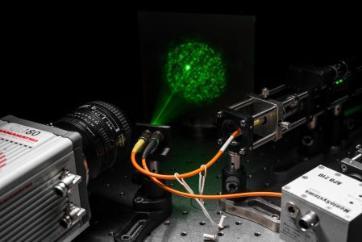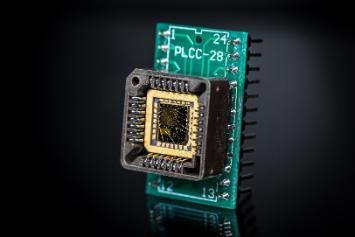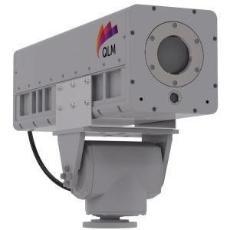Embracing quantum technologies for climate change
Published: 26 October 2021
How innovation in quantum imaging and sensing can transform UK industries and reduce environmental damage

The UK Government launched its net zero strategy outlining how it plans to deliver on its global commitment to reach net zero emissions by 2050. An extra £500M has been allocated towards innovation projects to develop the green technologies of the future. This fund will support the most pioneering ideas and technologies to help to decarbonise our homes, industries, land and power.
World-leading research is at the heart of a green economy. Universities play an essential role in the development of innovation, and advancing science and technology for commercialisation within industry and across society.
The £1B UK National Quantum Technologies Programme aims to deliver a new era of quantum technologies, one that will transform our economies and help to address society’s grand challenges; advancing healthcare, supporting financial services and communications, providing defence and security capabilities, driving global quantum information and computing, and achieving net zero targets and environmental protection.
QUANTIC – THE UK HUB FOR QUANTUM ENHANCED IMAGING
To tackle Climate Change, it is necessary for both industry and government organisations to have accurate, widespread access to monitoring solutions that can show the emissions, condition, and sustainability of our society.
QuantIC has developed a range of imaging solutions that address major areas of climate impact. These include seeing gas emissions such as methane and hydrogen, structural health monitoring within challenging environments, and enabling better product longevity for renewable energy sources.
REDUCING GREENHOUSE GAS
Reducing methane leaks in the atmosphere is one of the fastest ways to prevent climate change. With a warming effect of nearly 80 times that of carbon dioxide, methane, commonly referred to as natural gas, is the second greatest greenhouse gas contributor to climate change.
Methane is vital to several processes across society, including the production of Hydrogen, a key ingredient in achieving net zero. To continue using methane safely, monitoring for leaks is essential. Methane gas, invisible to the human eye, is detectable using specially designed infrared cameras, where sensors are extremely expensive and have a limited supply.
QuantIC’s research teams at the Universities of Bristol and Glasgow, in partnership with industry, have developed several detectors based on quantum science to extend our accessibility and sensitivity to non-visible wavelengths of infrared and ultraviolet. By providing society with the tools to measure our greenhouse gas emissions, we can identify and immediately resolve the greatest contributors to climate change, today.
(The SPLICE (Single Photon Lidar Imaging of Carbon Emissions) project, funded by Innovate UK, brought QLM’s gas visualisation solution to full commercial readiness)
IMPROVING STRUCTURAL HEALTH MONITORING
Effective structural imaging and monitoring will play an essential role in preventing long term environmental damage. The development of ultra-sensitive and ultra-fine quantum detectors provide a unique opportunity to produce images where lighting is extremely limited or imaging is hard to reach.
QuantIC researchers at Heriot Watt University, have utilised these ultra-sensitive photon-timing detectors to image through dark, murky water, giving real-time 3D video capabilities for monitoring coastal defences and deep-water projects, such as offshore wind turbines.
By monitoring these underwater structures, QuantIC can maximise their efficiency. This heightened performance, and lower running cost, directly translates into realising the ambition for tidal and offshore wind-based renewable energy. Furthermore, quantum-based imaging can support the correct maintenance of these programs, so they are sustainable for generations to come.

(Quantum borescope the width of a single human hair. Developed by QuantIC researchers at the University of Glasgow)
Advanced borescopes, the width of a single human hair, can be used to peer through tiny cracks to inspect degrading structures, or check car and plane engines are running cleanly, helping to alleviate long term environmental damage.
QuantIC is actively exploring applications for inspecting inside nuclear power stations, including the next generation of small modular reactors and experimental fusion systems.
ENHANCING RENEWABLE ENERGY SOURCES
Improving the efficiency and reliability of wind turbines and solar panels is another application for quantum enhanced imaging.
Modern wind turbines have internal motors to align their direction and blades to the upcoming wind, allowing them to generate the most renewable energy possible, and reduce unstable, damaging force. However, weather conditions are difficult to predict perfectly, and wind may quickly change course. A quantum enhanced LiDAR mounted to a turbine is sensitive to changes in air speed, allowing real-time motor adjustments. This gives QuantIC the opportunity to deliver more renewable energy and prolong the lifespan of turbines across the globe.
Solar panels are a widespread platform for producing renewable energy, however their lifespan can be limited due to large defects, and sudden failures. One of the most common failures are hot spots, which occur when the power is unevenly generated across the panel, often because of accidental shading or dirt. This can ultimately lead to an electrical imbalance known as reverse bias, causing the solar panel to generate significant heat, and in extreme cases catch fire.
Infrared cameras can provide easy temperature measurements of solar panels to quickly locate hot spot formations however these cameras are expensive to purchase.

(IndiPix technology is paving the way to compact, light-weight, cost-effective infrared cameras)
IndiPix is a novel infrared detector design that is produced using a vastly simplified manufacturing process, leading to cost-effective cameras. QuantIC is exploring the use of IndiPix for applications such as hot spot detection to help support the adoption of renewable energy.
If you have some environmental monitoring challenges that you think QuantIC’s technology could be able to solve contact our Business Development Manager, Christopher.Payne-Dwyer@glasgow.ac.uk
First published: 26 October 2021


